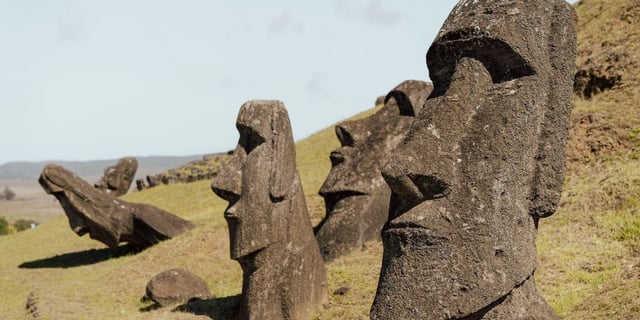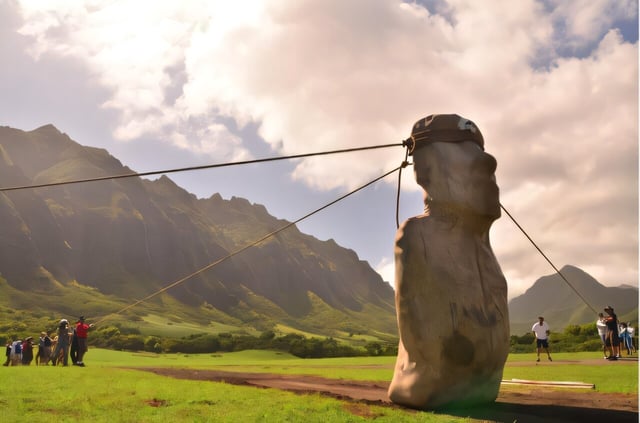Overview
- The Journal of Archaeological Science paper presents convergent evidence from large-sample measurements, physics-based 3D modeling, and a replica field trial for upright, rope-assisted transport.
- Researchers measured 962 statues, focusing on 62 along ancient roads, and identified wide D-shaped bases with a forward lean suited to a controlled rocking gait.
- In a field experiment, 18 people moved a 4.35-ton replica 100 meters in 40 minutes, indicating the method’s practicality and low labor requirements.
- Ancient roads roughly 4.5 meters wide with concave profiles appear designed to stabilize and guide moving statues, with overlapping routes consistent with staged path clearing.
- Abandoned pieces cluster within about 2 km of the Rano Raraku quarry in a pattern consistent with transport failures, and the findings challenge prone-on-wood models the authors invite others to test.

